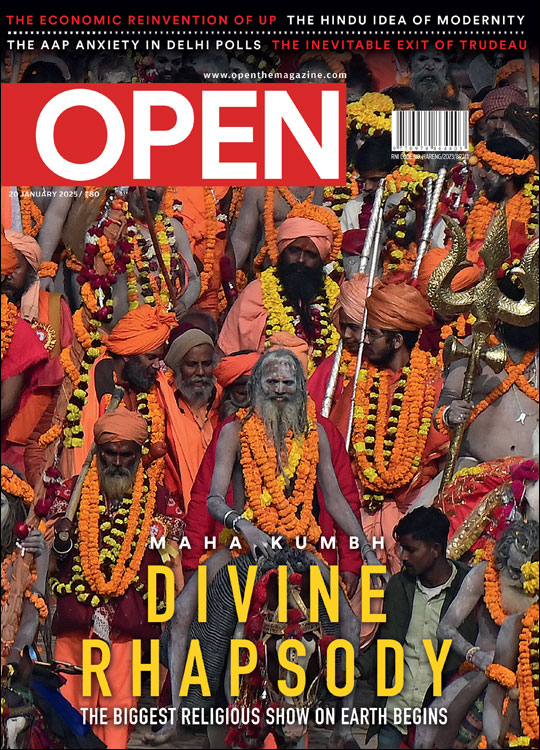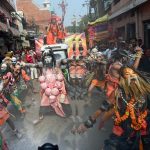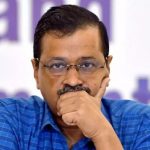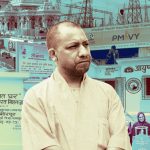I, Chowkidar
Is Modi riding an Everyman wave?
/wp-content/uploads/2019/03/chowkidar1.jpg)
To a friend a wave is a greeting; to a traffic policeman, an order to stop; to a barber, a curl he had better protect if he wants to retain his customer; to the physics student, a complicated something that I do not pretend to understand; to the surfer, a thrill. To a candidate in a democracy, a wave is a dream, if he is on the right side of it.
The wave has become a trope among the many metaphors for public sentiment. Every journalist sets out in search of a wave, or writes reams in its absence. And yet no one quite grasps its essential characteristic. A wave is never visible until it nears the shore.
Even a tsunami can travel a thousand miles without a splash along the way. It is the job of pundits to check seismic shifts that generate a powerful current, but you can’t see much if you keep shouting at the surface. An election date is the shore. Now that the calendar for the 17th General Election is known, those without blindfolds can see signs of a second Narendra Modi victory. What was submerged within voter consciousness is becoming apparent.
Our coastal states speak Bengali, Odiya, Telugu, Tamil, Malayalam, Kannadiga, Marathi or Gujarati; the Hindi heartland lives alongside rivers and mountains. The term in Hindi for the same phenomenon is ‘hawa’ or wind. When the wind sweeps in, you know which way it is blowing, but no one is ever sure where the wind rose.
It is now common to attribute the ‘hawa’ for Narendra Modi to the daring air strike on the jihad factory at Balakot in Pakistan, which redefined India’s security doctrine. For the first time, our air force crossed the international border to hit terrorist targets barely a hundred kilometres north of Islamabad. Prime Minister Modi sent a message: when Indian lives are lost, there will be accountability. A border will not keep sanctuaries safe. This touched a chord across a nation which, in 2008, had witnessed the pusillanimity of Sonia Gandhi and Manmohan Singh after the barbaric havoc in Mumbai. Tired of being trapped on a stone-wall, Indians welcomed a counter-offensive that took out a Jaish-e-Mohammad complex after a Jaish leader had claimed “credit” for Pulwama.
Balakot was a demonstration of what was known as forward- defence in the Great Game for Central Asia, where, in the 19th century, two great empires confronted each other. Tsarist Russia moved towards Afghanistan and India by swooping up the Khanates, reaching Khiva by 1880. The British Raj challenged the Russian advance beyond Herat, rather than at Khyber.
But while this certainly energised support for Modi, equally substantive reasons for Modi’s appeal lie on a parallel axis. Security has an economic dimension as well. The poor want food security, through low inflation and unhindered supply. They want roof security, and banking security of the kind that the middle and upper classes take for granted. Everyone wants life, health and job security, which are possible only through government schemes and high growth.
The first decision that Narendra Modi made, upon being elected, was historic in concept and radical in implementation. He made elimination of poverty the central objective of his economic philosophy. The operative word was ‘elimination’. He knew he was setting the bar higher than anyone else; then he raised it further. He wrote a date upon this horizon: 2022.
Not too many people are aware of this, but “poverty alleviation” is a Constitutional obligation upon every government. Alleviation, however, is word without pace; and certainly governments since 1947, even if committed to the cause, have not shown the urgency that was required to abolish this curse of harsh and utterly cruel poverty, by far the worst inheritance from British colonialism. But this happened at a snail’s pace. Perhaps those who took decisions had never gone hungry themselves. For too many within the administrative elite, poverty was a statistic, not a massive humanitarian crisis.
There was one subversive problem, which Narendra Modi recognised early on. Radical change can incite class friction, since it involves a substantive transfer of national resources. Modi wanted transition with harmony. He took an extremely unusual route. He appealed to the conscience of the better-off
Even a decade after Jawaharlal Nehru’s death in 1964, or a quarter century after freedom, India was still in the throes of famine and mass hunger. What other definition can there be for failure of governance? Nehru’s recipe was a pale form of socialism. However persuasive this may have sounded in theory, in practice it degenerated into stagnation. The marginalised poor, lost in despair, fuelled by rage, began in the 1960s and 1970s to veer towards the violence and chaos of Naxalism.
Lal Bahadur Shastri’s term was too short, but he did energise the farm sector in an effort to raise food production. His successor, Indira Gandhi, recognised the dangers of septic poverty, and she turned the accelerating crisis into a brilliant electoral bait in the 1971 elections.
But her pseudo-socialism, with its leftist patrons, drove the country into a rut that blocked both progress and equity. Within two years of her stunning victory in the 1971 General Election, there was massive discontent across the country. In 1975 she locked India into an Emergency prison, and was defeated in 1977. When she campaigned for re-election in the winter of 1979-80, she shifted her theme to stability and national unity. Economic despair had inevitably seeded a larger and more complex political conflagration.
The measurement of poverty has always been controversial; causing frequent changes in methodology. In 1971, the Planning Commission used calorie consumption as a standard; in 1973-74 the calorie count was lowered from 2,100 to 1,776 calories in urban areas, possibly to dress up figures. In 1999, as the stress shifted from income to consumption, we got the Mixed Reference Period, also measuring five items: clothing, footwear, durables, education and health.
The remarkable aspect of Modi’s communication strategy is the evocative manner in which he personalises the harsh edges of poverty. The Modi Experience fuses perfectly into the image of a Chowkidar. The symbolism could not be better: that of a common man, a nationalist, who offers security to the nation and to ordinary people
But poverty should also be measured by expectations. Every generation expects more than what served for its parents. This is as it should be. The poor are not foolish; they do not think that their hut is going to be replaced by a palace. But they have every right to demand that the roof must change from thatch to brick; that their diet increase from two chapattis to four; that their children receive an education that can open the door to aspiration.
By 2014 at least 400 million Indians were living below what I call the ‘anger line’. Narendra Modi heard something that no one else did. These 400 million were asking a question: if it took over six decades to bring the ‘anger line’ from 70 per cent to 30 per cent, would it take another 50 years to bring it down to zero? They did not have 50 years to waste.
He switched the pace from alleviation to elimination, adding a deadline, 2022. Then came radical moves. Modi decided to trust the poor with the latest technology. This required a reorientation of traditional attitudes. Aadhar and Jan Dhan, through which 300 million new bank accounts were opened, became the foundation of economic empowerment. Mrs Gandhi had nationalised banks in the name of the poor in 1969. It took another 45 years for the impoverished to actually see the inside of a bank. It was revolutionary: for the first time in banking history, accounts were opened for those without money, rather than for those with funds.
The sheer scale, magnitude and depth of Mudra, a major flagship Modi initiative, brought capitalisation to rural, semi-rural and urban medium and micro-entrepreneurs. So far cottage industries had been more cottage than industry; today they can get finance with accountability but without collateral. Banks, once the virtually exclusive resource of the rich, now lend vast monies to the poor.
Narendra Modi opted for pragmatic solutions instead of static ideology. He knew that change had to be visible and meaningful. He took electricity to every village; equally, through LED bulbs he increased the power of light. These things seem small only if you take a surplus of electricity for granted. There are about a hundred such schemes that improve the daily life of the forgotten. The list is probably too long for readers of this magazine, but it is not long enough for women who have got gas cylinders. Modi is able to campaign on the assurance that the impossible will be possible only because he has done precisely this in his first five years.
Rahul Gandhi tried very hard to make Rafale the battering ram of his accusatory rhetoric. This never took off because the people do not believe that Modi is either corrupt or corruptible. But since Rahul is indifferent to reality, he kept on, even, implicitly, questioning the credibility of the Supreme Court and the Air Force in pursuit of his target
There was one subversive problem, which Modi recognised early on. Radical change can incite class friction, since it involves a substantive transfer of national resources. Modi wanted transition with harmony. He took an extremely unusual route. He appealed to the conscience of the better-off. In the most famous example, he asked those with extra gas cylinders to surrender them so that they could be given to the poor. It worked.
The remarkable aspect of Modi’s communication strategy was the evocative manner in which he personalised the harsh edges of poverty. His 2014 speech from the Red Fort will be remembered as among the most powerful orations ever heard. In searing language, he described the toxins that plagued the body of a woman who had to wait till sunset for her toilet. Here was the inspiration for the Swachh Bharat movement, designed to bring dignity and better health into the lives of the never-haves. He picked up the broom himself, and said that a clean India was possible only through a mass movement. Five years later there is a sea-change in attitudes as citizens compete to raise the cleanliness rank of their cities.
It is the sum total of the Modi Experience which is galvanising voters; he is the magnet. The bookends are identification with the poor, and guardian of India’s security.
Both fuse perfectly into the image of a Chowkidar. The symbolism could not be better: that of a common man, a nationalist, who offers security to both the nation and to ordinary people. It cannot be accidental that during his last visit to Mumbai the prime minister honoured the great RK Laxman, whose ‘Common Man’ pocket cartoons appeared on the front page of the Times of India for as long as he was alive and working.
Congress leaders, unbelievably, are dismissing the Chowkidar with disdain. Congress has, through some imperceptible transition, simply slipped away from the real world in which the Indians live. Rahul Gandhi looks like a very appropriate president of a zoned-out party.
One Congress ally, a leader of Sharad Pawar’s Nationalist Congress Party tweeted this: ‘No Indian youth longs to be a Chowkidar. It is an insult to reduce our talented people to aim at so low as becoming a class four employee! A chowkidar is however a class four manual worker.’ They don’t get it, do they? Sharad Pawar remains a patriarch in Maharashtra, but his second rung has much to answer for, including a declining vote share. This is surely why Pawar decided not to contest even after his candidature was announced. He should not risk electoral failure after, if I am not mistaken, 14 successive victories.
The post-Balakot Chowkidar has delivered a collateral dividend. Rahul Gandhi tried very hard to make Rafale the battering ram of his accusatory rhetoric. This never took off because the people do not believe that Modi is either corrupt or corruptible. But since Rahul Gandhi is indifferent to reality, he kept on, even, implicitly, questioning the credibility of the Supreme Court and the Air Force in pursuit of his target. But after Balakot, the question is not why Rafale was purchased, but why it was not inducted into service earlier.
Nerves, therefore, are getting frayed at the top echelons of Congress. At the moment of writing, Rahul Gandhi is pondering whether even Amethi, the family heirloom constituency, is safe enough for him. In 2014, his margin of victory was slashed by about two-thirds. A repeat performance would mean defeat. According to newspaper reports, Karnataka Congress President Dinesh Gundu Rao has written to Rahul Gandhi inviting him to contest from Karnataka. Such letters are not written without authorisation.
This invitation arrived, however, before Rahul Gandhi was welcomed by Bangalore bystanders very recently with a chorus of “Modi! Modi!” In Uttar Pradesh, Priyanka Gandhi was greeted with chants of “Modi! Modi!” There are no safe seats. Voters might even be telling the dynasty that its shelf life is over.
In Uttar Pradesh, far from seeking seat adjustments, the BSP leader Mayawati is giving press conferences that she wants nothing to do with Congress, and will set up candidates against Congress across the electoral map. In Bihar, Lalu Prasad Yadav has issued an ultimatum to Congress: take eight seats out of 40, and try your luck. In Bengal, an understanding with the CPM has crashed even before it had a chance to stand. There are 184 seats in Bengal, Bihar, Jharkhand, UP and Uttarakhand. Congress will have effective candidates in barely a dozen constituencies. This election season began with much talk of gathbandhan and mahagathbandhan. Instead, as polling day nears, we see a growing isolation of Congress.
In 2014, BJP asked the electorate to deliver a Congress-mukt Bharat. This time, it seems, non-BJP parties would also be happy to see the oldest party in India go the way of the dinosaur.
During his final speech in the last Lok Sabha, the doyen of UP, Mulayam Singh Yadav, delighted the BJP and shocked the opposition by saying that he would be quite happy to see Narendra Modi return to office. He explained why. The prime minister had done whatever work he wanted, so why should he not want him back? That is precisely how the voter thinks. Prime Minister Narendra Modi has made the implausible possible. Much has happened, much more will happen as India finds her way to the vanguard of the 21st century.

/wp-content/uploads/2025/01/Cover_Kumbh.jpg)















More Columns
For most sadhus, Maha Kumbh is a microcosm of devotion, community Open
It is Tough Being a Cop in Prayagraj Open
Delhi HC raps AAP govt over CAG report Open